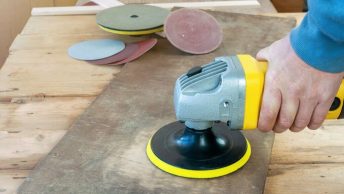The construction world is full of tools that make a handyman’s job easier. Two popular saws used in the industry are the Skill saw and the circular saw. While both have similar names, they differ significantly in terms of design and purpose.
Mostly, people need clarification about the difference between a circular saw and a skill saw. A”Skill saw” is a brand name often used colloquially to refer to a circular saw.
Therefore, there is no significant difference between a Skill saw and a circular saw. Any differences between a SkilSaw and other circular saws are minor manufacturing differences.
In this article, we’ll dive into the specifics of these two saws and analyse their similarities and differences.
Skill Saw:
The term “Skill saw” was initially coined by the Skil Corporation in 1924. It is a handheld circular saw famous for its lightweight, compact design and robust motor.
The original Skill saw had a worm drive mechanism that provided more torque to the blade, making it suitable for heavy-duty jobs. However, today, Skill has expanded its product range to include various types of circular saws, including sidewinders and worm drives.
Skill saws are mainly used for cutting wood but can also be used on other materials with specialized blades. These saws have a maximum blade capacity of 7-1/4 inches and a motor power ranging from 10 to 15 amps.
Types of Skill Saws.
There are two main types of Skill saws.
1. Worm Drive Skill Saws:
These saws have a longer and narrower body, with the blade placed on the left side. The motor is positioned at 90 degrees to the blade, making it more efficient in delivering power to the blade.
Due to their design, worm drive skill saws are heavier than sidewinder saws but offer more torque and better control.
2. Sidewinder Skill Saws:
Also known as direct drive saws, these have a shorter and broader body with the blade placed on the right side.
The motor is positioned parallel to the blade, making it more compact and lighter than worm drive saws. Sidewinders are ideal for precision cutting due to their lightweight design and higher RPM.
Modified Type:
DeWalt Skill Saws:
DeWalt is another renowned manufacturer in the power tool industry, known for its high-quality skill saws. DeWalt skill saws are similar to the original Skil saws, offering excellent performance and durability.
DeWalt skill saws come in various models and are designed to meet the needs of DIY enthusiasts and professional contractors.
They are well-regarded for their reliability and precision.
Key Features and Advantages:
- Power and motor types: Skill saws typically have a motor power ranging from 10 to 15 amps, making them suitable for heavy-duty tasks. The worm drive skill saw offers more torque compared to sidewinder saws, making it ideal for cutting thicker materials.
- Blade size and capacity: Most skill saws have a maximum blade diameter of 7-1/4 inches. This size allows for a deeper cut and makes it easier to work with more extensive materials.
- Lightweight and compact design: Skill saws are known for their lightweight and compact design, making them easy to handle and transport on job sites. Their size also allows for more precise cutting in tight spaces.
- Versatility: While skill saws are primarily used for woodcutting, they can also be used on other materials, such as metal and plastic, with specialised blades.
Common Applications:
Skill saws are widely used in construction, carpentry, and DIY projects. Some common applications of skill saws include:

- Framing: Skill saws are perfect for cutting studs and joists when framing walls and floors.
- Roofing: The powerful motor and deep blade capacity make skill saws ideal for cutting through roofing materials like shingles and plywood.
- Trim work: Skill saws are precise enough for cutting trim pieces such as baseboards, crown moulding, and door casings.
- Deck building: Skill saws can easily cut through pressure-treated lumber used in deck construction.
Must check: Poulan chainsaw wont start.
Pros and Cons
| Pros | Cons |
|---|---|
| 1. Versatility: Can cut various materials such as wood, metal, and plastic. | 1. Safety Concerns: Can be dangerous if not used properly; potential for kickback and accidents. |
| 2. Portability: Compact and lightweight for easy transport to job sites. | 2. Noise: Circular saws can be quite loud, requiring hearing protection. |
| 3. Speed and Efficiency: Cuts quickly and efficiently through materials. | 3. Dust and Debris: Generates a significant amount of dust and debris, necessitating dust control measures. |
| 4. Straight Cuts: Good for making straight, long cuts when guided properly. | 4. Limited Precision: Not ideal for intricate or precision cuts. |
| 5. Affordable: Relatively inexpensive compared to some other power saws. | 5. Blade Changes: Changing blades can be time-consuming and require tools |
Circular saw:
A Circular Saw is a Handheld Power Saw With a Flat, Circular Blade Mounted on an Arbour.
It Was Invented in the Late 18th century and has Since Become One of the Most Versatile Tools in the Construction World.
Circular Saws Come in Various Sizes, from Small Cordless Models to Large Industrial Versions. They can also be Corded or Cordless, Depending on the Power Source.
Types of Circular Saws:
There are three main types of circular saws: corded, cordless, and worm drive. The difference lies in the power source and motor type.
1. Corded Circular Saws:
These saws are powered by electricity and have a cord connected to an outlet. They offer continuous power without the need for recharging or replacing batteries.
2. Cordless Circular Saws:
Dewalt circular saws are available in cordless models as well. These saws are powered by rechargeable batteries, making them more portable and versatile. However, they may have less power compared to corded saws.
3. Worm Drive Circular Saws:
Similar to skill saws, worm drive circular saws have the motor positioned at an angle behind the blade. This design provides more torque and is ideal for heavy-duty tasks.

Key Features and Advantages:
- Power and motor types: Circular saws can range from 12 to 15 amps of power, making them suitable for various cutting tasks. The worm drive circular saw offers more torque and is ideal for heavy-duty applications.
- Blade size and capacity: Circular saws come in different blade sizes, from 6-1/2 inches to 10-1/4 inches. This allows for a deeper cut and working with different materials.
- Portability: Cordless circular saws offer the advantage of being portable, making them convenient for on-the-go projects or job sites without electricity access.
- Versatility in cutting angles: Most circular saws come with a bevel adjustment feature, allowing for angle cuts up to 45 degrees. This makes them suitable for various cutting tasks, such as miter cuts and rip cuts.
Common Applications:
Circular saws are commonly used in construction and woodworking projects. Some typical applications of circular saws include:
- Framing: Circular saws can easily cut through lumber used in framing walls and floors.
- Cabinet making: Due to their portability and precision, circular saws are often used for making cabinets and other furniture pieces.
- Cross-cutting and ripping: With the right blade, circular saws can make accurate cross-cuts and rip cuts on various materials.
- Demolition: Circular saws are also used in demolition projects to cut through wood, metal, and other materials.
Must check: Best Small Gas Chainsaw
Pros and Cons
| Aspect | Pros | Cons |
|---|---|---|
| Cutting Efficiency | – Fast and efficient for straight cuts. | – Limited to straight cuts and angles. |
| Versatility | – Can cut through various materials. | – Not suitable for intricate designs. |
| Portability | – Portable and easy to transport. | – Requires a stable surface for use. |
| Depth of Cut | – Adjustable depth for different tasks. | – Limited cutting depth compared to other saws. |
| Ease of Use | – Relatively easy for DIY enthusiasts. | – Can be intimidating for beginners. |
Circular Saw VS Skill Saw
| Feature | Skilsaw | Circular Saw |
|---|---|---|
| Blade Orientation | Sidewinder (blade on the right) | Sidewinder (blade on the right) |
| Cutting Capacity | Typically 7-1/4 inches | Various sizes, commonly 7-1/4 to 10 inches |
| Weight | Generally heavier due to worm drive | Lighter and more compact |
| Motor Position | Inline with the blade | Parallel to the blade |
| Cutting Depth Control | Depth adjustment lever or knob | Depth adjustment lever or knob |
| Power Source | Corded (usually higher wattage) | Corded or Cordless (battery-powered) |
| Cutting Accuracy | Good accuracy for straight cuts | Good accuracy for straight cuts |
| Versatility | Better suited for heavy-duty tasks | Suitable for a wide range of applications |
| Price Range | Typically more expensive | Varies depending on brand and features |
| Ease of Use | May require more strength to handle | Easier to handle and manoeuvre |
| Common Uses | Framing, ripping, heavy-duty carpentry | General woodworking, DIY projects |
| Safety Features | Blade guard, safety switch, anti-kickback | Blade guard, safety switch, anti-kickback |
Factors to Consider When Choosing
When choosing between a skill saw and a circular saw, there are several factors to consider:

- Type of project: Consider the cutting tasks you will be performing. If you need more torque for heavy-duty tasks, a worm drive skill or circular saw may be the better option.
- Budget: Skill saws tend to be more expensive than circular saws. Consider your budget and the features that are most important to you.
- Portability: If you need a saw for on-the-go projects, a cordless circular saw may be the better choice.
- Cutting capacity: Both skill saws and circular saws come in different blade sizes. Consider the thickness of the materials you will be working with and choose a saw with a suitable blade capacity.
- Safety features: Look for safety features when choosing a saw, such as blade guards and electric brakes. These can help prevent accidents and injuries.
Maintenance and Safety:
Maintenance:
To ensure your saw remains in top condition, regular maintenance is essential. Some tips for maintaining your Skill or circular saw include:
- Cleaning: Regularly clean the saw and blade to remove any debris that may affect its performance.
- Lubrication: Keep moving parts lubricated to reduce friction and prevent damage.
- Blade sharpening: Sharpen or replace blades as needed to maintain cutting efficiency.
- Check for wear and tear: Regularly inspect the saw for any signs of damage or wear and address any issues promptly.
Safety:
When using a saw, it is essential to follow safety precautions to prevent accidents and injuries. Some tips for using Skill and circular saws safely include:
- Wear protective gear: This includes safety glasses, earplugs, and a dust mask.
- Use proper techniques: Always use the saw as intended and follow the manufacturer’s instructions. Never try to remove jammed materials while the blade is still moving.
- Secure workpiece: Make sure the material you are cutting is securely clamped or held in place to prevent kickback.
- Keep a safe distance: Always keep your hands and body at a safe distance from the blade when operating the saw.
Conclusion:
Skill saws and circular saws are both versatile power tools used in construction and woodworking projects.
While they have some similarities, they also have distinct features that make them suitable for different tasks.
When choosing between the two, consider your project needs and budget to find the best option for you. And always remember to prioritize safety when using any power tool. So, choose wisely according to your needs!




